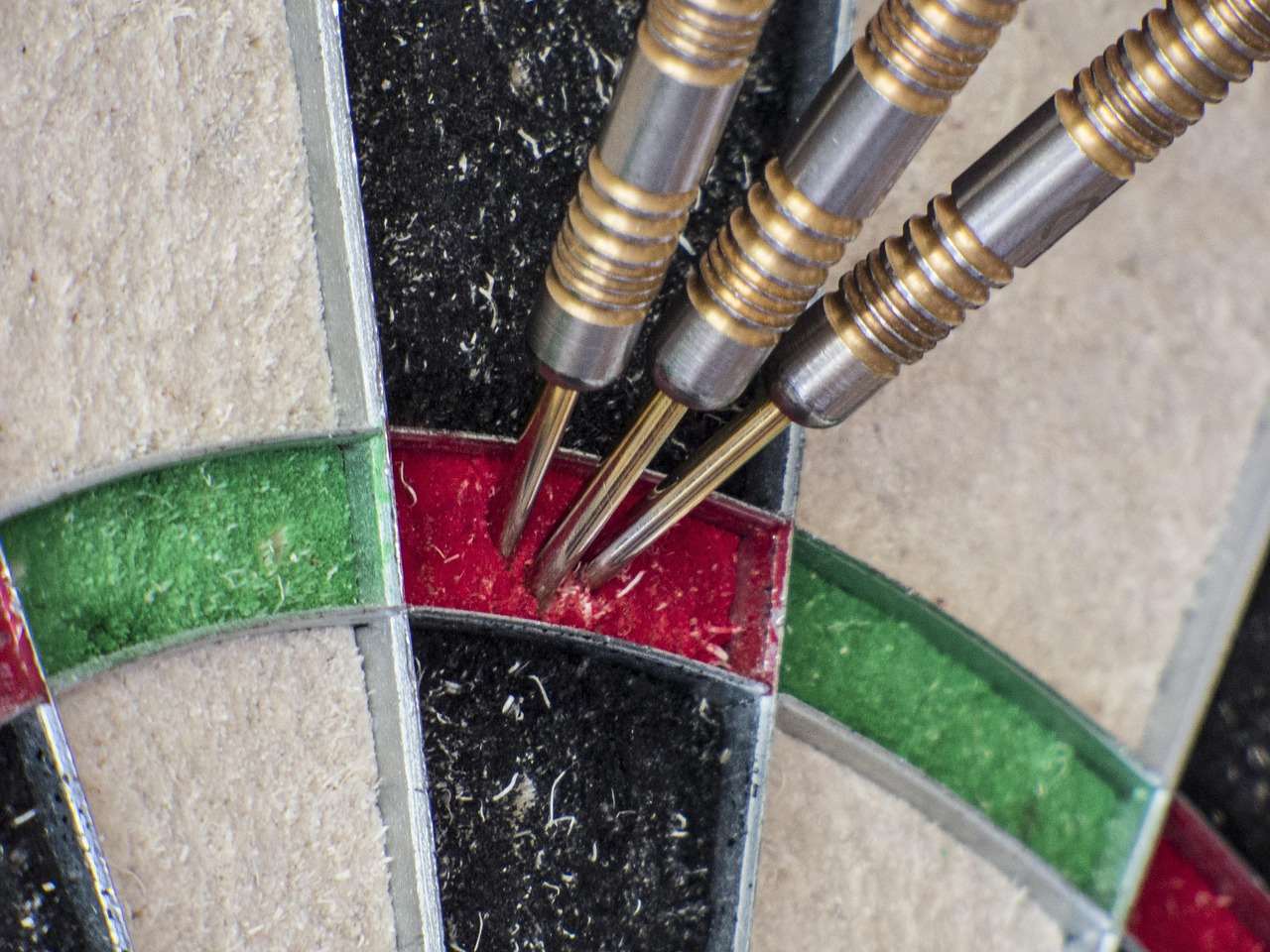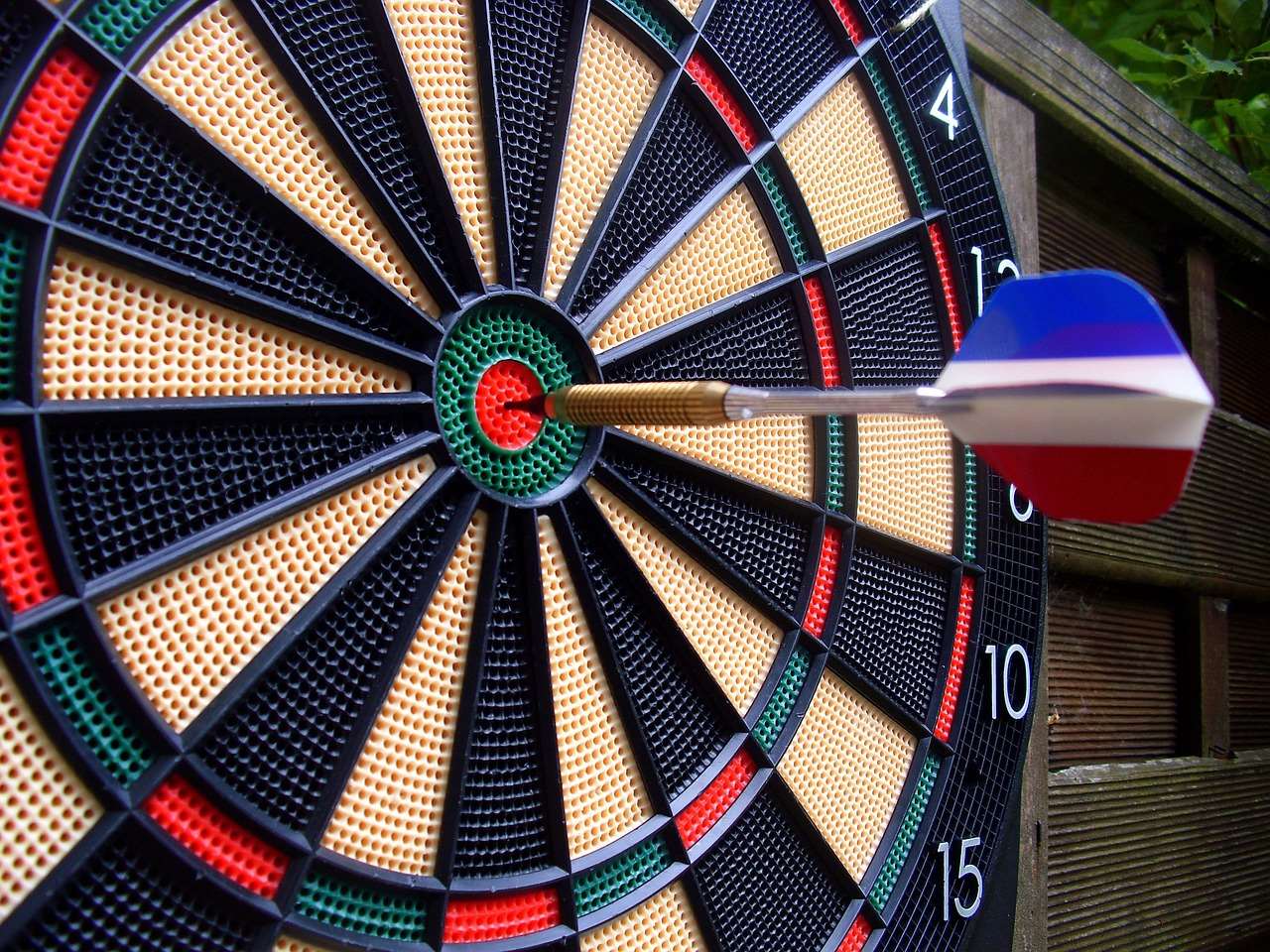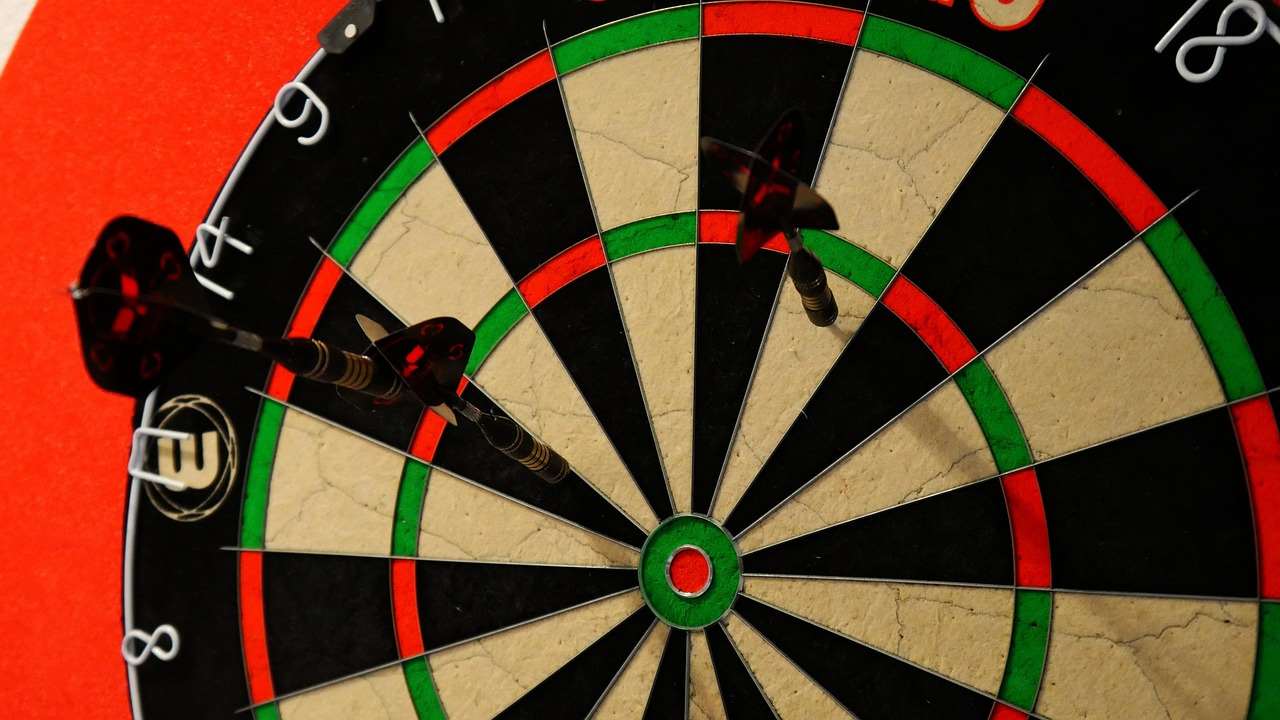Recognizing dart point wear signs early is crucial for maintaining dartboard integrity and improving your throwing accuracy. This article details how to identify wear, understand its causes, and implement preventative measures to prolong the lifespan of your darts and dartboard. You’ll learn about point sharpening, dartboard maintenance, and choosing the right equipment.
⚠️ Still Using Pen & Paper (or a Chalkboard)?! ⚠️
Step into the future! The Dart Counter App handles all the scoring, suggests checkouts, and tracks your stats automatically. It's easier than you think!
Try the Smart Dart Counter App FREE!Ready for an upgrade? Click above!
Understanding Dart Point Wear Signs
Over time, even the best dart points will show signs of wear. Identifying these dart point wear signs is essential for preventing damage to your dartboard and maintaining consistent performance. Ignoring these signs can lead to more frequent bounce-outs, frustration, and ultimately, a shorter lifespan for both your darts and your board.
Here are some common signs of dart point wear to look out for:
- Burrs and Nicks: These small imperfections can catch on the dartboard fibers, pulling them out and causing premature wear.
- Dullness: A sharp point is crucial for proper penetration. A dull point will glance off the board more easily.
- Bent or Misshapen Points: These can affect the dart’s trajectory and increase the likelihood of bounce-outs.
- Rust or Corrosion: This can weaken the point and make it more prone to breaking.
Regularly inspecting your dart points for these signs will allow you to address any issues before they become serious problems.

Causes of Dart Point Wear
Several factors contribute to dart point wear. Understanding these causes can help you take steps to minimize their impact and extend the life of your darts. One factor is the quality of the dart point itself. Lower quality materials will typically wear faster than higher quality ones. You can Choose Best Dart Equipment to help with this.
Here are some common causes:
- Dartboard Material: Some dartboard materials, such as tightly packed sisal, can be more abrasive on dart points than others.
- Throwing Technique: A poor throwing technique that involves excessive force or incorrect angle can accelerate wear.
- Frequency of Play: The more you play, the faster your darts will wear down.
- Storage Conditions: Storing darts in a humid environment can lead to rust and corrosion.
- Contact with Hard Surfaces: Dropping your darts on hard surfaces can damage the points.
By being mindful of these factors, you can significantly reduce the rate of dart point wear.
Preventative Measures for Dart Point Wear
Preventing dart point wear is all about proactive care and maintenance. Here are several practical steps you can take to extend the lifespan of your dart points:
- Regular Sharpening: Sharpening your dart points keeps them sharp and prevents them from dulling.
- Dartboard Rotation: Rotating your dartboard distributes wear evenly across the surface, reducing stress on specific areas.
- Proper Storage: Store your darts in a case or container to protect them from damage and corrosion.
- Using a Dartboard Surround: A surround protects your wall from stray darts and reduces the likelihood of dropping your darts on hard surfaces.
- Cleaning Your Darts: Regularly clean your darts with a soft cloth to remove dirt and grime.
Implementing these preventative measures can significantly prolong the life of your dart points and maintain optimal dartboard performance.

Sharpening Your Dart Points
Sharpening your dart points is a critical part of dart maintenance. However, it’s important to sharpen them correctly to avoid damaging the points. This requires the right tools, namely a dart sharpener or a sharpening stone designed specifically for darts.
Here’s a step-by-step guide to sharpening your dart points:
- Secure the Dart: Hold the dart firmly in your hand or use a vise to secure it.
- Use a Dart Sharpener: Insert the dart point into the sharpener at a slight angle.
- Rotate the Dart: Gently rotate the dart while applying light pressure. Avoid excessive pressure, as this can damage the point.
- Check the Point: After sharpening, check the point for sharpness. It should be sharp enough to grip the dartboard but not so sharp that it damages the fibers.
- Remove Burrs: Use a fine-grit sandpaper or emery cloth to remove any burrs or rough edges.
It’s important not to over-sharpen your points. You want a sharp point, but one that is rounded and will grip the board. Excessively sharp points can actually damage the dartboard.
Dartboard Maintenance and Its Impact on Dart Points
Dartboard maintenance is intrinsically linked to dart point wear. A well-maintained dartboard reduces the strain on your dart points, extending their lifespan. A neglected dartboard, on the other hand, can accelerate wear and tear.
Here are some key aspects of dartboard maintenance:
- Rotation: Regularly rotate your dartboard to distribute wear evenly. This prevents specific areas from becoming overly worn and reduces the stress on your dart points.
- Moisture Control: Keep your dartboard in a dry environment to prevent moisture damage. Excess moisture can cause the sisal fibers to swell and become more abrasive.
- Cleaning: Periodically clean your dartboard with a soft brush to remove dust and debris. This helps to maintain the board’s surface and reduces friction on your dart points.
- Repairing Damage: Promptly repair any damage to the dartboard, such as loose fibers or holes. This prevents further wear and tear and protects your dart points from snagging.
By prioritizing dartboard maintenance, you can create a more forgiving surface for your darts, reducing the rate of dart point wear.
Choosing the Right Dart Points to Minimize Wear
The type of dart points you choose can significantly impact their durability and resistance to wear. Different materials and designs offer varying levels of performance and longevity. Knowing what to look for can help you make an informed decision. It might be worth the effort to consider Are Premium Darts Worth It.
Here are some factors to consider when choosing dart points:
- Material: Steel tips are the most common and durable option. However, the specific type of steel can vary. Look for high-quality steel that is resistant to bending and breaking.
- Surface Coating: Some dart points have a surface coating, such as titanium nitride, which can enhance their durability and reduce friction.
- Point Design: The design of the point can also affect wear. Points with a smooth, tapered design are less likely to snag on the dartboard fibers.
- Grip: Consider whether you prefer smooth or grooved dart points. Grooved points may provide better grip but can also wear down faster.

Alternatives to Steel Tip Darts
While steel tip darts are standard for sisal dartboards, alternative options exist that might offer advantages in terms of dart point wear, particularly for electronic dartboards.
- Soft Tip Darts: These darts use plastic tips and are designed for use with electronic dartboards. Soft tips are less likely to cause damage to the board and are typically more durable than steel tips in that specific application.
- Conversion Points: These are adapters that allow you to use steel tip barrels with soft tip points. This provides a compromise between the feel of steel tip darts and the reduced wear associated with soft tips on electronic boards.
While these alternatives primarily address the needs of electronic dartboard users, considering them highlights the connection between dart type and wear characteristics. However, it’s critical to choose darts that are compatible with your dartboard to avoid damage and ensure safe gameplay.
Addressing Bent Dart Points
A bent dart point can significantly affect your accuracy and increase bounce-outs. Straightening a bent point requires caution and the right tools.
Here’s how to safely attempt to straighten a bent dart point:
- Use Pliers (Carefully): Use needle-nose pliers to gently bend the point back into shape. Wrap the point in a soft cloth to protect it from scratches.
- Apply Gradual Pressure: Avoid applying too much force, as this can weaken the point and cause it to break.
- Check Alignment: After straightening, check the alignment of the point. It should be straight and centered on the barrel.
However, sometimes the damage is too severe, and the point cannot be safely straightened. In these cases, it’s best to replace the point entirely.

When to Replace Your Dart Points
There comes a point when sharpening and maintenance are no longer sufficient, and it’s time to replace your dart points. Recognizing when to replace them is crucial for maintaining optimal performance and preventing further damage to your dartboard. Knowing more can help you Finding Value Budget Dart Sets.
Here are some signs that indicate it’s time for a replacement:
- Excessive Wear: If your dart points are significantly worn down, even after sharpening, it’s time to replace them.
- Frequent Breakage: If your dart points are frequently breaking or bending, it indicates that they are weakened and need to be replaced.
- Difficulty Sharpening: If you find it increasingly difficult to sharpen your dart points, it’s a sign that they are reaching the end of their lifespan.
- Reduced Grip: If your dart points are no longer gripping the dartboard properly, resulting in frequent bounce-outs, it’s time to replace them.
Replacing your dart points is a relatively inexpensive way to improve your game and protect your dartboard.
Conclusion
Understanding and addressing dart point wear signs is essential for any serious dart player. By being proactive with preventative measures, such as regular sharpening and dartboard maintenance, you can extend the lifespan of your darts and maintain optimal performance. Recognizing the signs of wear and knowing when to replace your dart points will ensure consistent accuracy and prevent damage to your dartboard. Take action today to implement these strategies and elevate your dart game! Consider checking out more content about Choose Best Dart Equipment, to enhance your skills and equipment.
Hi, I’m Dieter, and I created Dartcounter (Dartcounterapp.com). My motivation wasn’t being a darts expert – quite the opposite! When I first started playing, I loved the game but found keeping accurate scores and tracking stats difficult and distracting.
I figured I couldn’t be the only one struggling with this. So, I decided to build a solution: an easy-to-use application that everyone, no matter their experience level, could use to manage scoring effortlessly.
My goal for Dartcounter was simple: let the app handle the numbers – the scoring, the averages, the stats, even checkout suggestions – so players could focus purely on their throw and enjoying the game. It began as a way to solve my own beginner’s problem, and I’m thrilled it has grown into a helpful tool for the wider darts community.